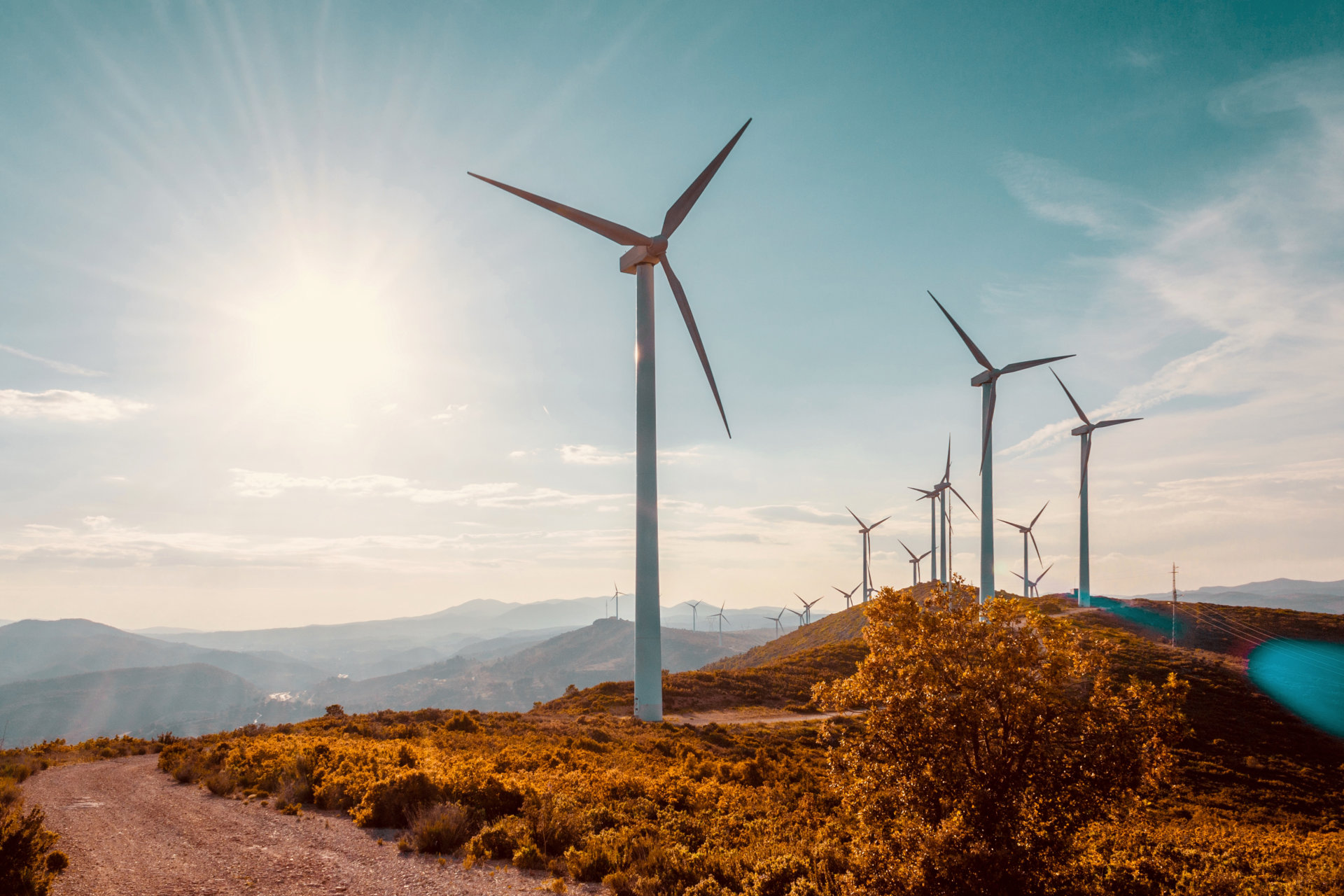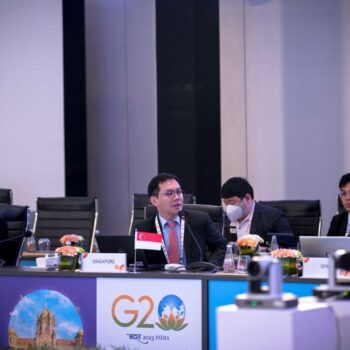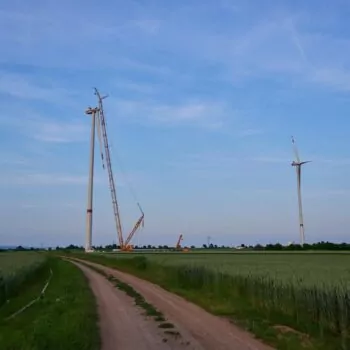This expert interview between Leo Roberts and Jesse Burton aims to provide readers with a concise overview of the evidence surrounding the concept of ‘baseload’ in electricity systems, particularly in relation to coal power stations. It explains the technical, political and economic issues around baseload and challenges some of the myths perpetuated by certain industry actors, examining the difference between choosing a specific energy generating technology, and designing and delivering a fully-functioning energy systems.
Jesse Burton is a Senior Associate to E3G based in Cape Town, South Africa. Jesse works closely with climate and energy modellers, Governments, and non-governmental stakeholders to provide analysis and policy advice on coal transitions in South Africa and globally.
Leo Roberts is the Research Manager for the Coal Transitions team at E3G, where he focuses on ensuring the diplomatic community has access to up-to-date political and economic analysis of the global coal landscape.
LR: Hi Jesse, thanks very much for taking the time to speak.
JB: Thanks – it’s my pleasure.
We’re increasingly hearing pro-coal interests making the claim that we can’t close coal plants, and even that we should be building new ones, because we need them to supply ‘baseload’. What do they mean by this, and is there any truth in these claims?
You’re right; many people – in the coal sector, but also in government and the finance industry – are making the argument that coal plant closures and a managed transition in coal regions aren’t needed, and even that new coal power stations should be constructed, because electricity systems need ‘baseload’. This view assumes that we will always need coal plants for some technical reason, but in fact the term is an outdated way of thinking about how power systems work. It’s also a misnomer because “load” is actually the technical word for ‘demand’ in a system, not supply.
More importantly though, the idea of baseload is incorrect because there is no inherent technical requirement in electricity systems for large plants that operate inflexibly – that is to say, plants that can’t easily vary their output, or that suffer costly losses in efficiency and competitiveness if they do. So we really need to get away from the very idea of baseload, and towards something else, if we’re to move towards having cost-effective and reliable electricity systems around the world.
OK, so if baseload is an outdated and misleading concept, what do we need to ensure a stable electricity supply?
There definitely is a need for sufficient capacity in a system – enough to meet peak demand, as well as a pre-defined ‘reserve margin’. This capacity needs to be available in order to respond to higher demand as required, for example when plants that are offline for maintenance, or to flexibly generate so as to complement other resources. Contrary to what the proponents of coal and nuclear say however, this capacity needn’t come from large power stations, and can instead be supplied by a diversified and complementary set of resources.
Where did the idea of baseload come from in the first place, and what do people really mean when they use the term?
Essentially baseload is the idea that certain kinds of plants are the only ones that can supply power in large, continuously available chunks. The term stems from historical alignment between minimum electricity demand (the ‘base’ demand or ‘load’), and the profile and economics of base supply generators such as large coal plants. Historically it’s been cheapest to run these large generators at close to their maximum capacity, with limited variance in output. This led to these base supply generators dominating many electricity systems. But the rapid and widespread uptake of gas and renewable generators worldwide has shown that electricity systems can function effectively with a number of smaller plants supplying comparable capacity.
Of course, as the share of renewables grows, some operational changes to systems are needed, and it helps if systems have more flexible generators available.
What do you mean by ‘flexible’ and ‘inflexible’ generators, and why does this matter for electricity systems?
A stable or reliable electricity system requires the system operator to ensure that supply meets demand at every moment, however much demand fluctuates. This is because electricity demand changes over time – seasonally, depending on heating and cooling needs, daily, including weekends vs weekdays, or hourly, as people use more or less through the day, and often very little at night. It’s these changes in demand that underpin the need for flexibility in the system.
To be able to guarantee they can respond to demand at any single moment, system operators need to plan ahead, from a matter of sub-seconds through to a number of years in advance. On any given day, they need sufficient ‘available capacity’ to respond to unexpected spikes or reductions in demand, as well as to plan for maintenance or for unplanned faults in the system which may lead to generators going offline. Available capacity is then ‘dispatched’, and can come from any of a number of sources – existing thermal plants, demand-side responses, storage, or through any interconnections that a system may have to other sources of electricity.
I see. So is there any truth in the idea that large centralised stations are essential for grid stability?
In electricity systems, there is always a need for this ‘dispatchable capacity’ that a system operator can call on if required – be it on the supply side, or through the capability to reduce demand. In the past, coal and nuclear plants were dispatchable plants that also ran at close to their maximum output. Gas plants are also dispatchable, and sometimes run in this “base” supply mode. Equally though, gas plants can also run less often to fill in during periods of medium or high demand only, something that’s often uneconomic for coal plants, which are slower to come online.
So, it might be the case in some countries that the minimum demand can still be met cheaply from coal or nuclear plants that run continuously, but the point here is that this is not a technical requirement. It is an historical artefact of how systems have evolved, and one that is increasingly obsolete. We can see from many real-world examples that large, industrialised countries can still maintain a stable supply of electricity even as coal and nuclear provide smaller and smaller shares. Rather than a few large plants supplying large chunks of power, there are many smaller plants distributed around a system, that together meet that chunk of demand.
Right, so baseload is misleading because it implies that only large coal or nuclear power stations can provide the necessary capacity for the grid to be able to supply electricity under any circumstance, when in fact a number of smaller plants can provide the same reliability of electricity supply.
Exactly.
The pro-coal voices that use baseload to justify keeping coal running or building new coal often argue that renewables are intermittent, and as such can never replace the reliability of fossil fuels. We can’t turn renewables on and off, so are they correct?
No, they’re not. The difference with renewable energy plants like wind and solar PV is that the system operator does not choose to dispatch the plants, the weather does. This in turn means that when they are available may or may not match current demand patterns. The complementary generators and flexible loads in a system therefore need to be able to respond to this ‘variability’ over short and long timescales, hence the term ‘variable renewable energy’ or ‘VRE’. But it’s important to note that intermittency is not an effective argument against renewable energy generation as a fundamental part of reliable energy systems. Instead of inflexible baseload plants which cannot respond technically or economically to variability in demand, what is needed is flexible, dispatchable capacity, with renewables playing a central role.
So it makes sense for operators to have a wide selection of different technologies at their disposal, in case ‘the sun doesn’t shine or the wind doesn’t blow’, as the pro-coal lobby like to say?
Exactly. System operators have always considered the need for diverse and complementary generators, with a required reserve of dispatchable plants available to ensure reliability at multiple timescales, from instantaneous and sub-second, through seconds, minutes, hours, days and full seasons. This includes responding promptly if a plant goes offline, for example if a large unit at a coal or nuclear station trips, or cloud covers an area with multiple PV plants.
Importantly, what matters is not only how a single plant or type of plant runs, but how the system is designed to keep supply and demand in balance. The combination of technologies is what matters, not the characteristics of individual technologies, although of course these characteristics do shape the package of generators a system needs for both technical reliability and economic optimality.
A system approach to electricity planning ensures that a reliable supply of electricity is generated from complementary resources across the system, with the aim of meeting demand at lowest cost (which resources meet this aim will vary depending on the available resources in a given system).
But don’t renewables need back up if we want stable supply? And doesn’t that make electricity more expensive?
In the past, it was cheapest to meet most demand from base supply plants, but as the costs of renewables has fallen so rapidly in recent years, the economically optimal combination of technologies has changed. Now, renewable energy plus other flexible resources is often the cheapest combination – the exact make-up of the system depending on the resources available in any given system of course.
It is inaccurate to speak of the need for ‘renewables back-up’, because all systems require reserves to ‘back up’ the running generators, whether they’re based on renewables or not. What variable renewable energy technologies do need is to be accompanied by complementary resources with particular characteristics, especially as the penetration of renewable energy in a system increases. These complementary resources must be able to be turned on and off quickly, or to supplement particular weather patterns. For example, as levels of solar start to drop in the late afternoon, a system may need high levels of flexible technologies which can ramp up to full power quickly, or incentives to shift load to match variable generation. Suitable resources for complementing VRE can include concentrating solar power, pumped storage or hydro, batteries, geothermal, or demand side management, depending on the system in question and the type of electricity market.
In the short to medium term, making existing coal plants more flexible can contribute to maintaining reliability while systems transition in certain contexts. There may also be the need for longer-term or seasonal storage, such as gas, although of course this should ideally be from a low-carbon source such as green hydrogen. Having suitable transmission infrastructure is also essential, in order to move electricity from where it is being generated to where it is being used.
OK, so the mix of generating technologies is key. But does coal still have a role? People often claim it’s cheap relative to other technologies – wouldn’t it make sense to run those plants?
In the past it made economic sense to use coal and nuclear plants in this way, as running them flat out produced cheaper electricity per unit than ramping them up and down and lowering their total annual utilisation, which we call the “load factor”. But inflexible plants have always been supplemented by other technologies to meet incremental increases in demand, for example at peak times. In many cases it was cheaper to supply using more expensive gas plants, which tend to have high fuel costs but low capital costs, for a few hours per day at peak, than it was to build large coal plants that only ran sporadically.
It’s also worth noting that old coal plants where the capital has been paid off may still be cheap to run in some systems, but analysis consistently shows that new coal is more expensive than alternatives in most markets around the world, and in many cases, renewables are also cheaper than the marginal costs of coal plants[1]. Again, power system analysis shows how cheap energy from many smaller plants, coupled with more expensive but seldom used capacity as a complement, can deliver the most cost-effective power systems.
So the cost argument doesn’t fly when it comes to coal?
It is true that the cheapest kWh used to be produced from coal and nuclear power plants, running at full load, and supplemented by alternatives at peak times or during the day. Now though, the cheapest electricity in almost all markets is produced from the alternatives themselves – wind and solar plants, geothermal, or hydro. While coal and nuclear plants can and do adjust their output to match demand, doing this in the case of coal makes plants run less efficiently, puts stress on materials, and increases their greenhouse gas emissions, all of which can massively raise the costs per unit of electricity generated. This makes it even less viable to keep expanding coal in power systems.
So what are the trends we’re seeing around the world at the moment with respect to coal and nuclear plants in electricity systems?
In many markets we’re seeing rapid declines in ‘baseload’ supplies. This is particularly true in the USA, the UK, and across Europe, and in all of these countries the lights are still on. This drop is being offset by rapidly growing penetration of variable renewable energy, supplemented by complementary technologies such as gas and storage, and demand-side management. Come to think of it, I recall the former CEO of the UK National Grid even saying that baseload was “outdated”, and that was all the way back in 2015.
A rapid move to renewables can bring challenges, especially for systems that have high levels of inflexible generation, currently lack flexibility options, or have market design and pricing that does not encourage changes in demand-side behaviour. But the paradigm of power systems where demand is met from mostly from a fleet of large coal or nuclear plants has dramatically changed to the point of being totally outdated. The uptake of renewable energy into the future is now technically possible, economically optimal, and environmentally desirable. It’s an integral part of moving towards a modern energy system.
Thanks very much Jesse, we hope to hear more from you soon.
My pleasure, thankyou.
Further reading
- Glossary of terms: Baffled by baseload? Dumbfounded by dispatchables? Here’s a glossary of the energy debate.
- Australian Energy Market Operator (AEMO) 2019, Maintaining Power System Security with High Penetrations of Wind and Solar Generation
- Californian Independent System Operator (CAISO) 2016,What the duck curve tells us about managing a green grid.
- IEA 2019, Status of power system transformation 2019.
IRENA, 2015. From baseload to peak: Renewables provide a reliable solution. - Lund et al, 2015 Review of energy system flexibility measures to enable high levels of variable renewable electricity.
- Meridian Economics, 2019 “Baseload” and energy security.
De Vivero, G., Burges, K., Kurdziel, M. and Hagemann, M. 2019. Transition towards a decarbonised electricity sector – a framework of analysis for power system transformation.New Climate Institute & Re-expertise. - Podcast: https://www.greentechmedia.com/articles/read/the-key-to-unlocking-100-renewables
[1] A good overview can be found in Lazard, Carbon Tracker Initiative, and BNEF.


